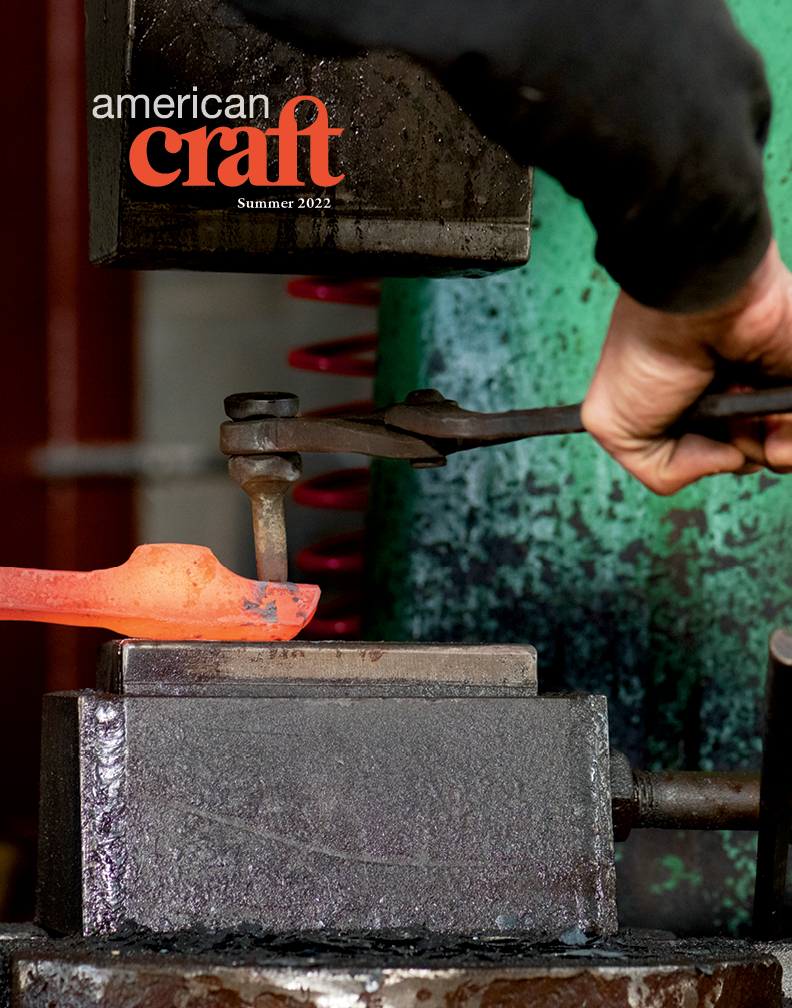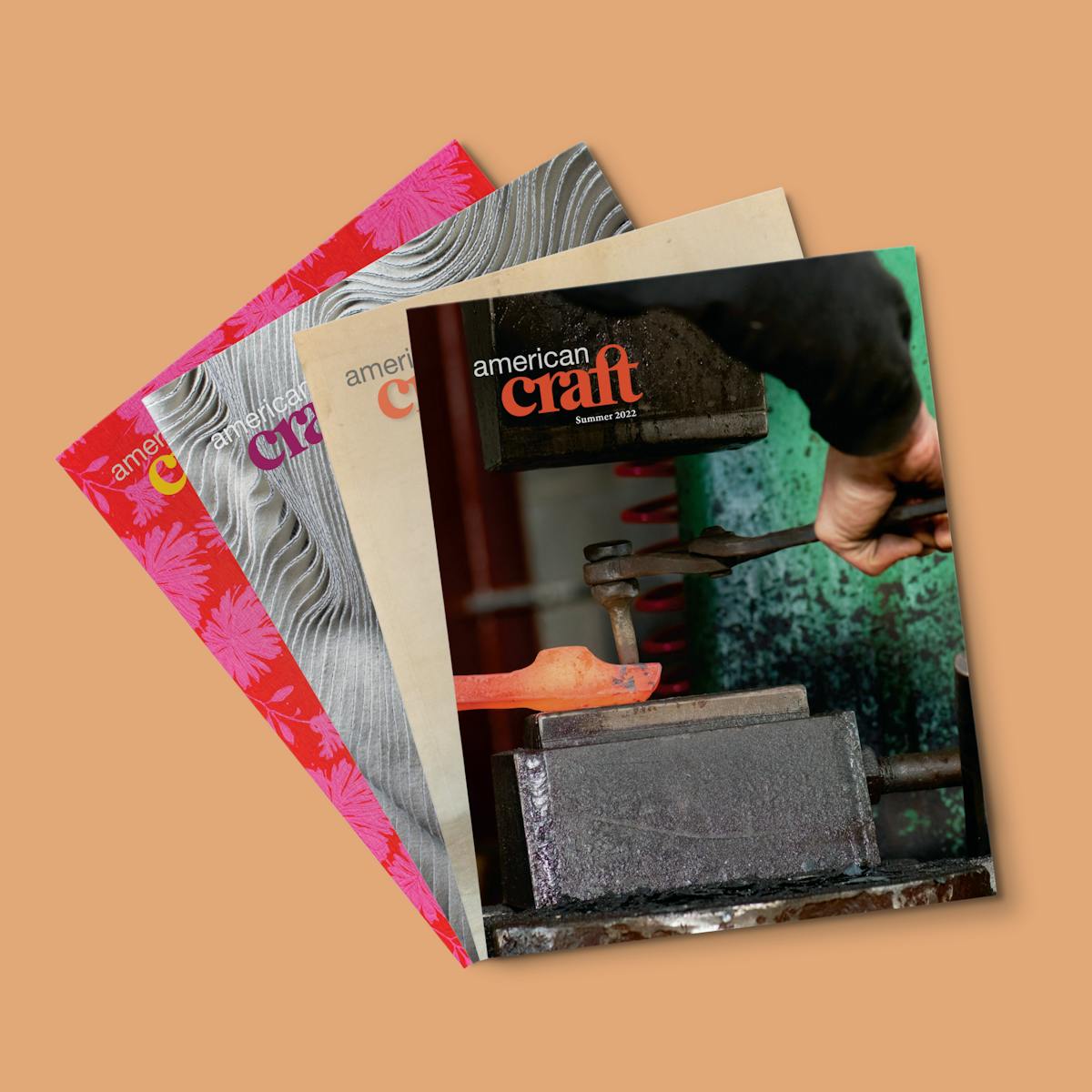The Queue: Drew Cameron
Get to know the people featured in the pages of our magazine as they share what's inspiring them right now.
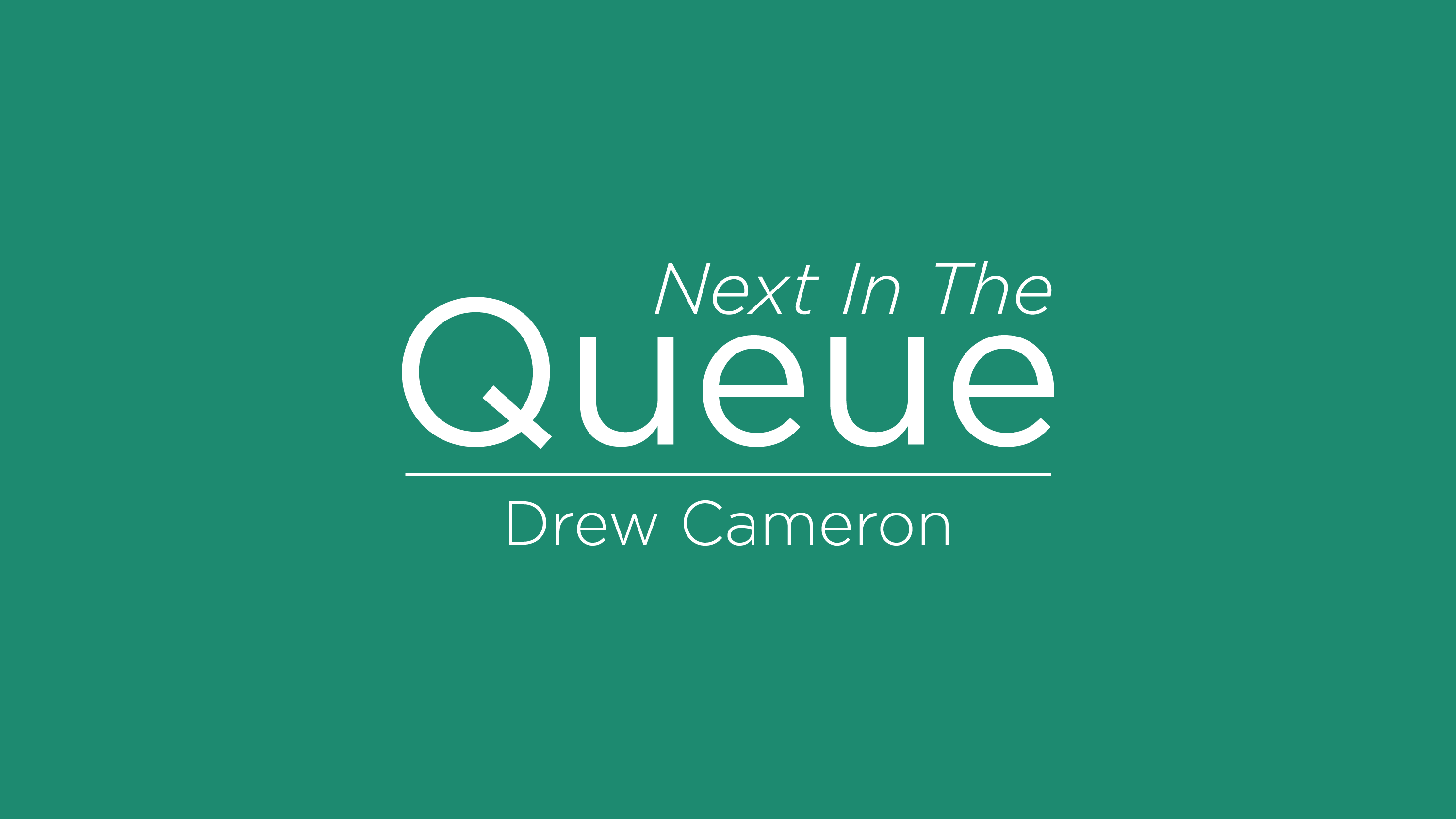
A biweekly roundup for and by the craft community, The Queue introduces you to the artists, curators, organizers, and more featured in the current issue of American Craft. We invite these inspiring individuals to share personally about their lives and work as well as what's inspiring them right now.
Drew Cameron is an Iowa City–based papermaker whose work uses military uniforms. His company, Combat Paper, puts on papermaking workshops throughout the country. He’s featured in Kimberly Coburn’s story “Material Alchemy” in our Summer 2022 issue, where his work appears along with that of James Brenner, the Lead to Life collective, and Thomas Little, who also transform tools connected with violence into craft objects.

Photo courtesy of Combat Paper®.
How do you describe your work or practice?
I practice hand papermaking. Within the craft, I have focused on rendering military uniforms into paper and facilitating workshops in the process through my company Combat Paper.
The past couple of years have presented many challenges, from a global pandemic to renewed urgency around issues of racial equity and police brutality. As we slowly move into a post-pandemic world, how are you finding beauty and staying grounded?
However possible, imagine a massive gathering where every person has moved the contents of their living room onto the street in front of where they reside and we are all able to communicate with each other because of our current social condition. Forums for dialogue are critical, and what we don’t acknowledge only grows in concern.
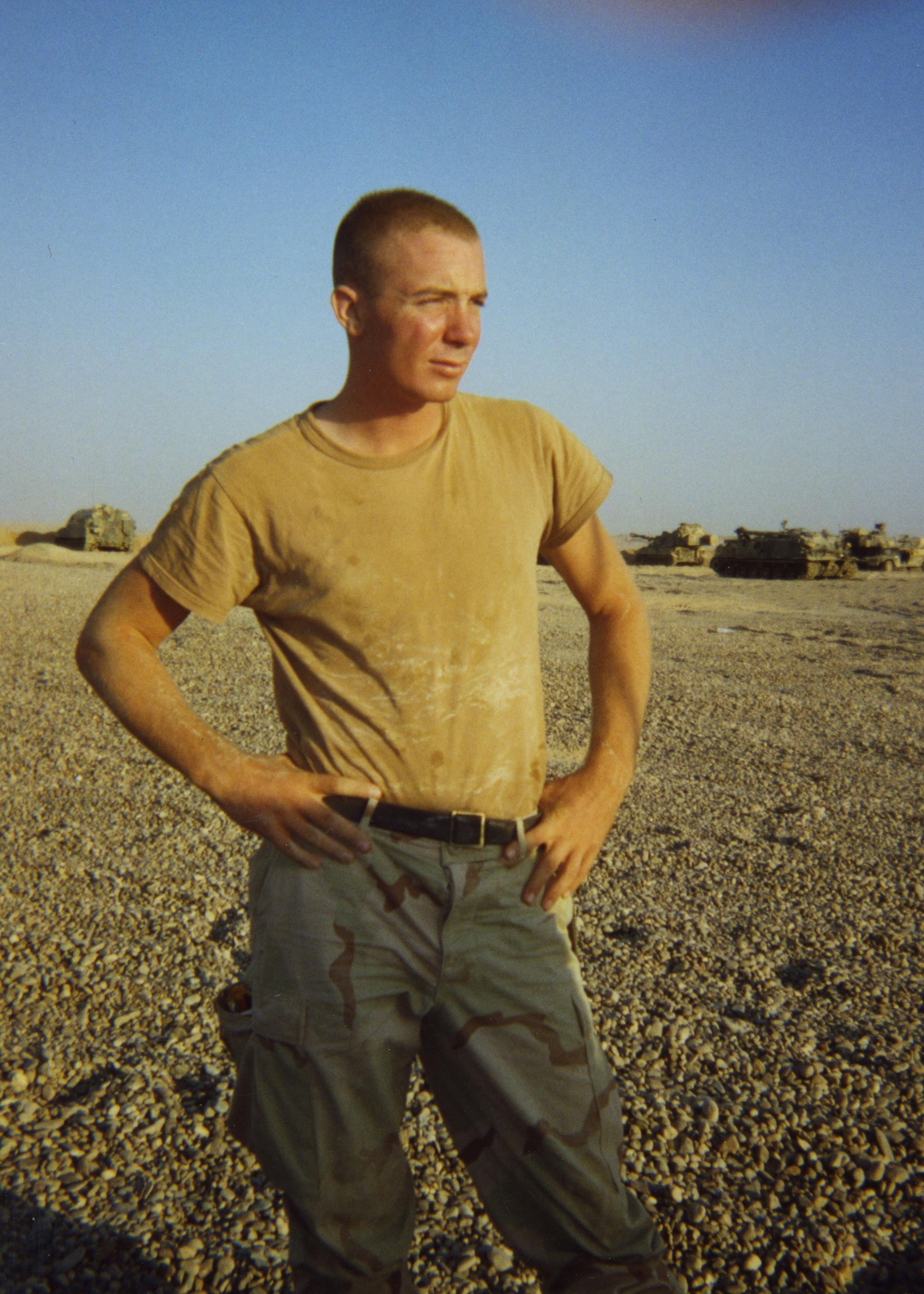
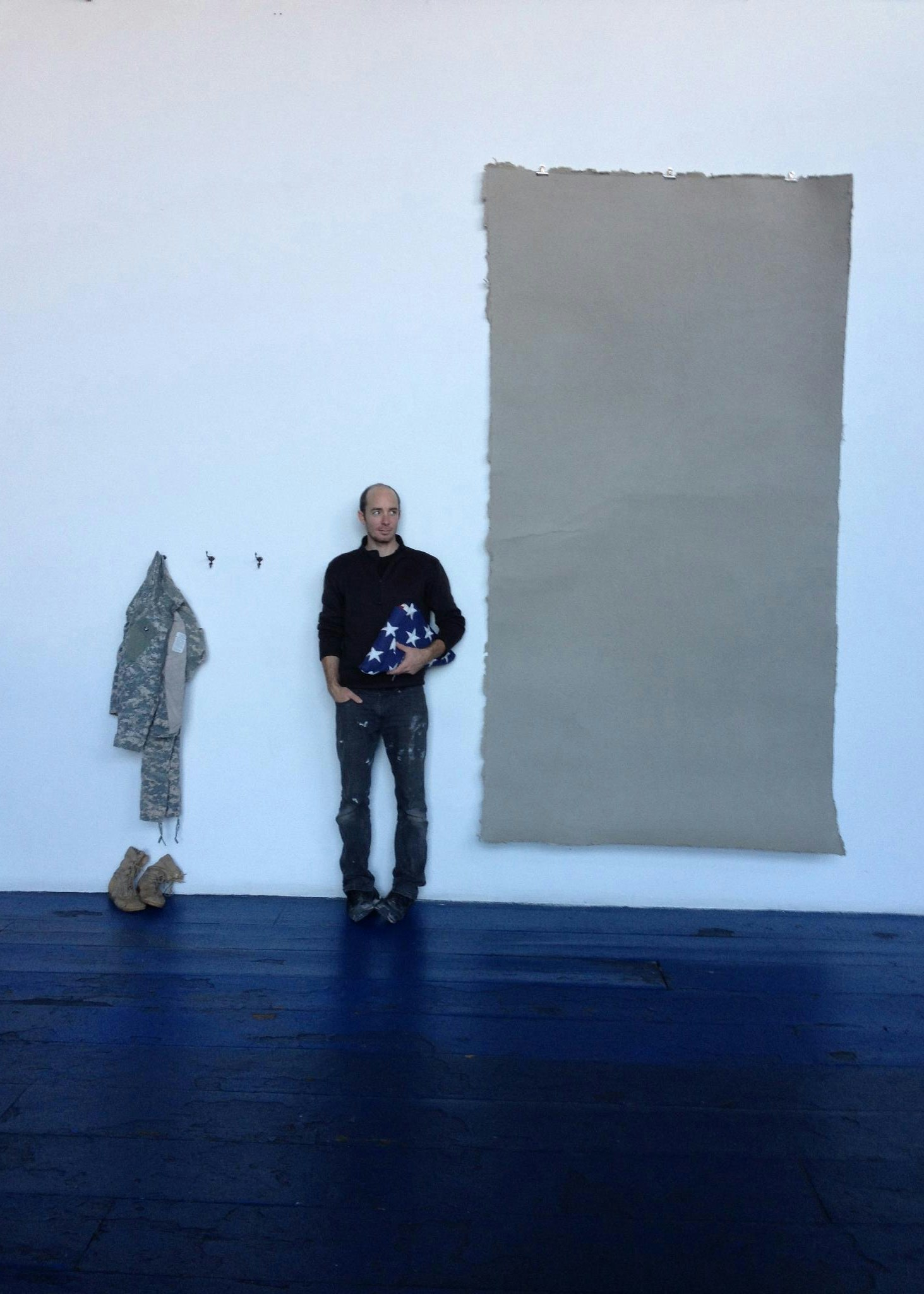
Photos courtesy of Combat Paper®.
The theme of the current issue of American Craft is “Forge.” Can you reflect on that theme as it relates to your work and practice?
Combat Paper is more than the sum of its parts. The process of making paper out of military uniforms generates connections between people in the immediate experience as well as through space and time. This reveals a beautiful capacity for papermaking to bring people together while investigating a unique way to converse about war and militarism.
What’s one of your favorite tools in your toolkit that the world should know about?
The Oracle Hollander Beater built by Lee McDonald. It is lightweight and portable, which has enabled many hand papermakers to practice and teach in versatile ways since the innovation arrived. Without this tool much of what we do would be logistically difficult.
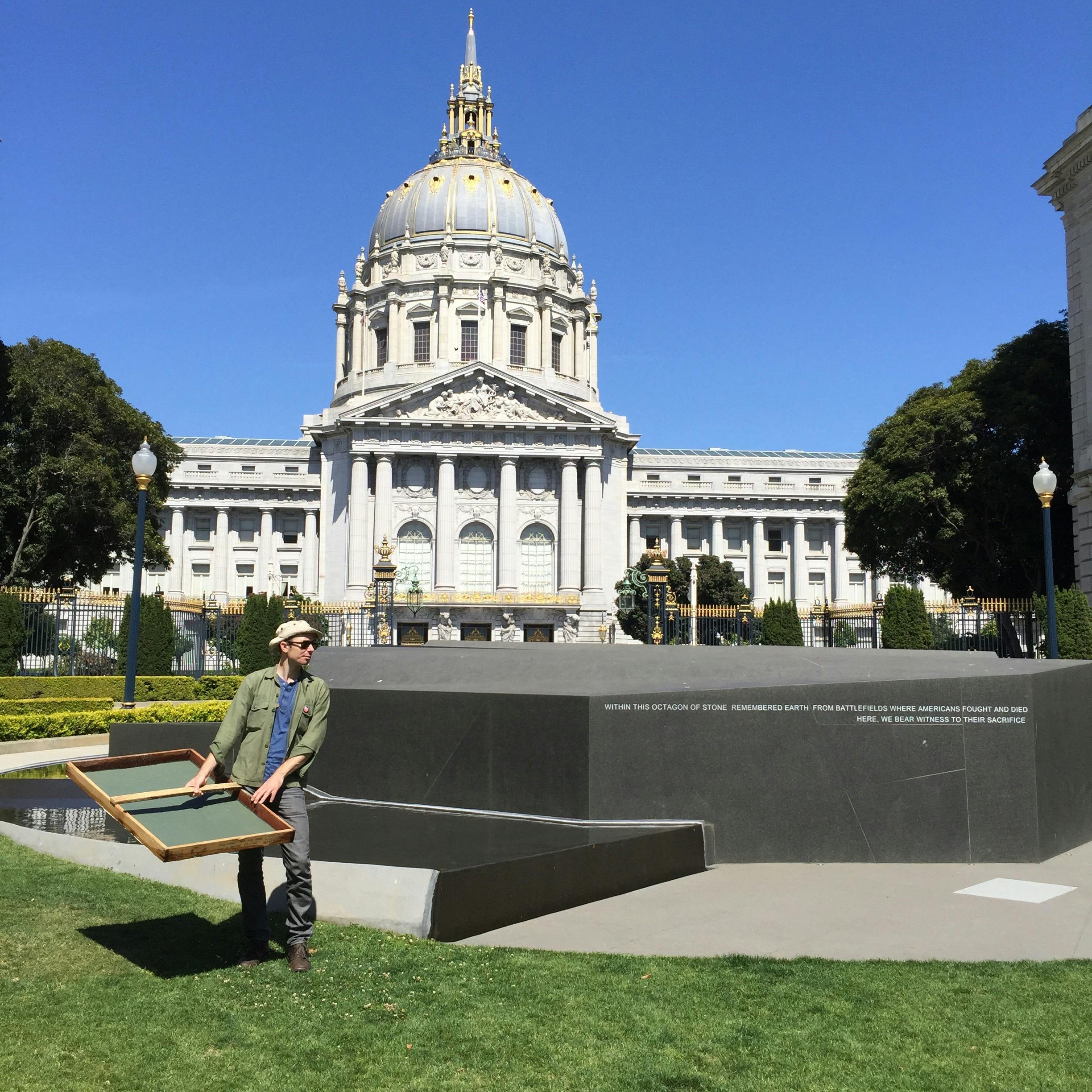
Photo by Zen Cohen.
What’s an exhibition or art project you think the world should know about, and why?
I have relied on the collective insights and camaraderie of the Veteran Art Movement through publications, exhibitions, and networks. They are a deep well of knowledge and experience that is imparting perspectives I don’t encounter elsewhere.
If you could purchase some artist’s work for your home or studio, who would it be and why?
Any of the printed materials from Bread & Puppet of Glover, Vermont. What they do is incredibly inspiring, beautiful, and full of much-needed levity.
Inspired by the people featured in The Queue?
Dive deeper into their work in the pages of American Craft magazine. Become a member of the American Craft Council to get a subscription and help fund a range of nonprofit programs that elevate the craft community.

